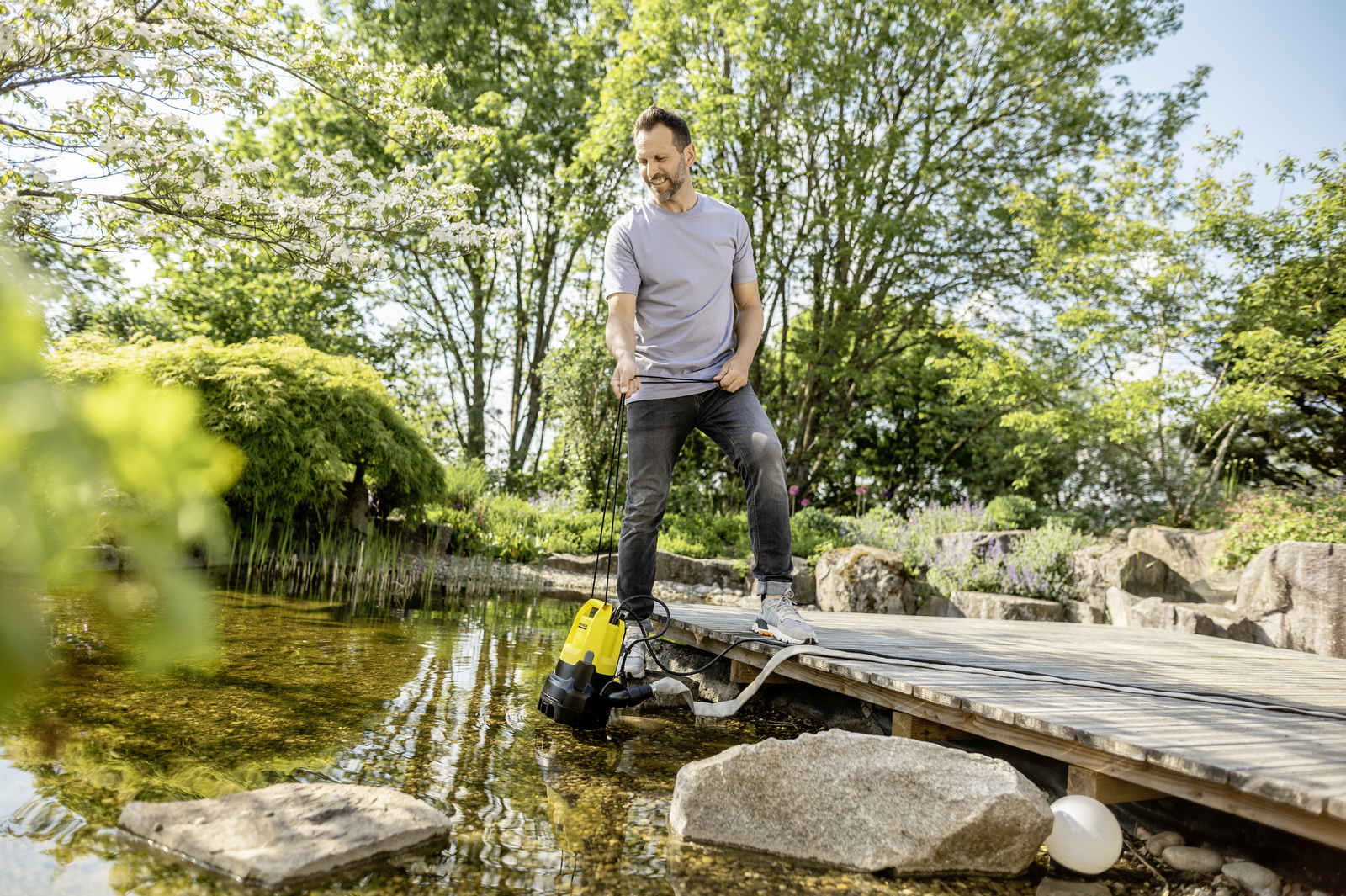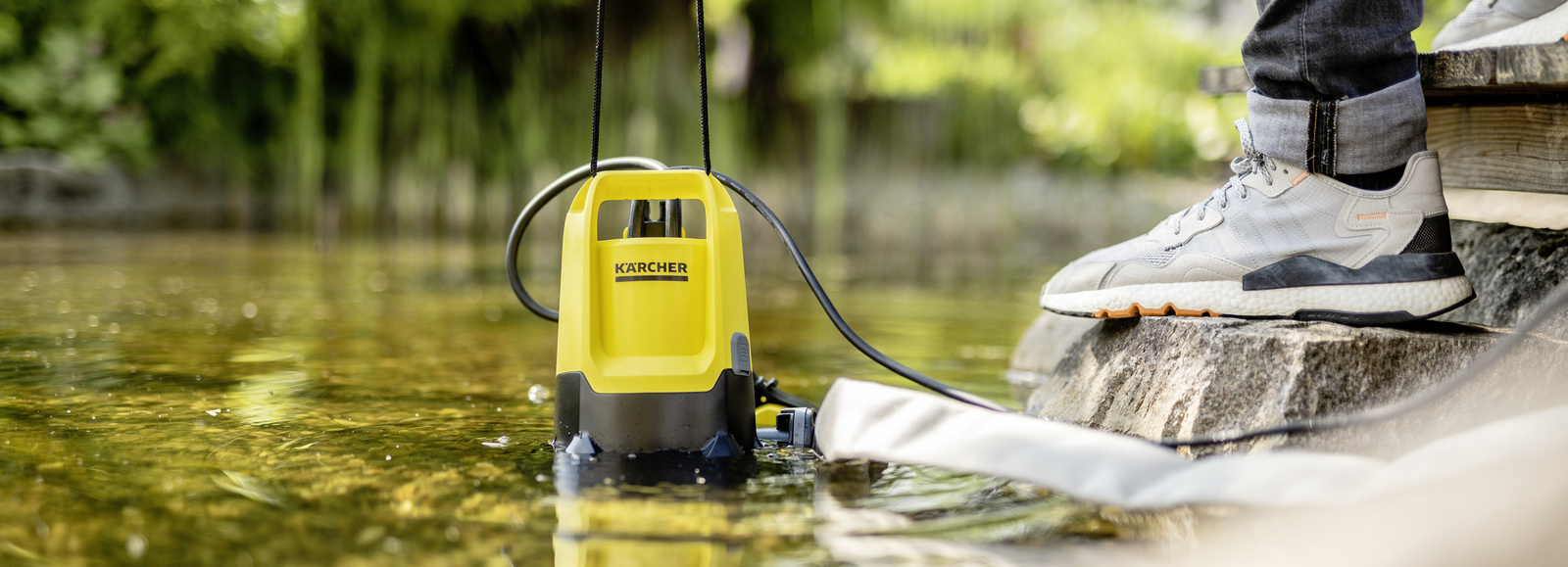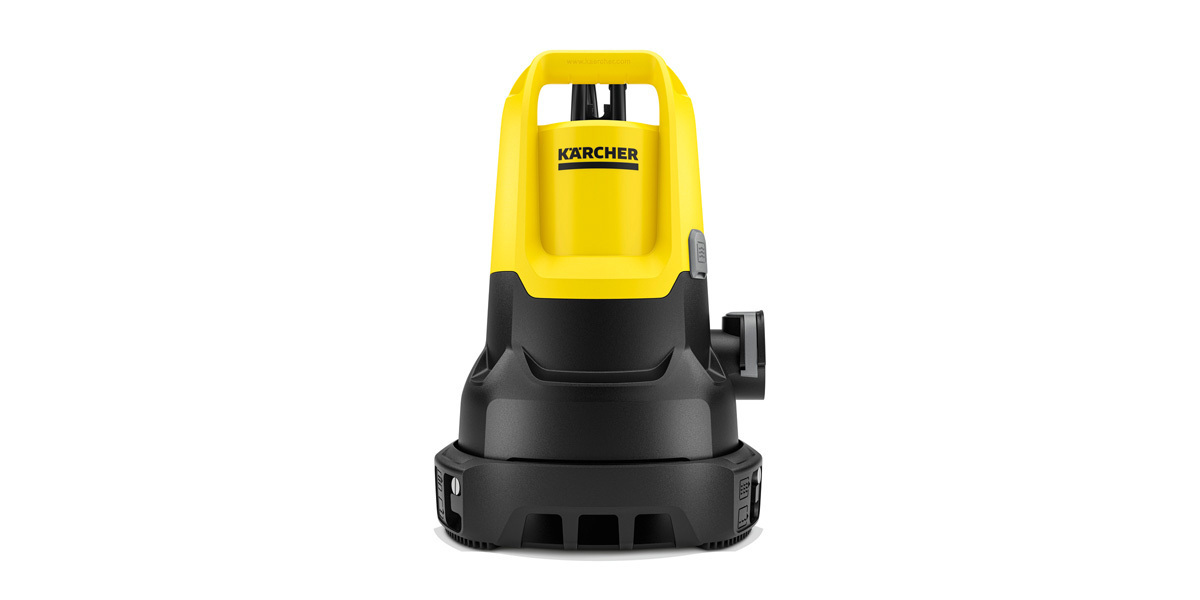Pond cleaning: The best tips for clear water
A garden pond is a beautiful eye-catcher, but you also have to maintain it regularly and clean it thoroughly. After all, it can only offer plants and animals a healthy habitat if it is well kept. With these tips, pond cleaning is guaranteed to succeed.
Pond cleaning: When and how?
You should thoroughly clean a garden pond at least twice a year – once in spring and again at the end of autumn.
In autumn, you should make the pond winter-proof. This is because leaves that have fallen down, dead plant residues or dead insects form an organic mass at the bottom of the pond, the decomposition of which involves a lot of oxygen being bound. Under a closed-off covering of ice and if water circulation is too low, this then leads to a lack of oxygen for larger animals such as fish and frogs. That's why it's important to clean the garden pond thoroughly before the winter, remove mud and ensure a healthy ecosystem.
After the winter, leaves and plant residues have accumulated again in the pond, and a thick mud layer on the ground. These should therefore be removed once more in spring, the pond water should be drained, the bottom of the pond cleaned and new water poured in. The body of water is thus ideally prepared for the summer months.
Draining the garden pond and relocating plants
Before you start cleaning, plants and animals such as fish, frogs and newts must be temporarily relocated and the pond water must be drained. This is done fastest with a submersible dirty water pump. It is positioned at the deepest point of the garden pond where the most dirt accumulates. Once the pond is empty, the loose mud is picked up first. The liner, gravel and larger stones can then be cleaned using a high-pressure cleaner, so that stuck dirt is released. Work should be done with a flat water stream so as not to damage the pond liner. Particular care should be taken when cleaning the edges of the pond, as a lot of dirt settles here. You can then simply pump the (newly created) dirty water out of the pond with the submersible pump.
Then the clean liner is examined for cracks and leaks and repaired if necessary, for example with residues of the pond liner and waterproof PVC adhesive. If everything is OK, the plants return to their place and the pond basin is filled up with fresh water.
Particular care must be taken when cleaning the pond if fish are living in it. They must be carefully relocated before cleaning. Storage tanks act as a temporary home. In order to create approximately the same living conditions for the fish, the containers should consequently be filled so that approximately one third of the water in each container is the pond's own water. Pond plants are also protected from drying out in this way. In order to offer them additional protection, do not pour the fresh water into the pond too quickly after cleaning. The temperature is then uniformly adjusted, and suspended matter settles more easily on the bottom of the pond.

Tip: Using mud as a fertiliser
Water that remains after cleaning and biological residues such as leaves or pollen can be removed with special mud extractors or multi-purpose vacuum cleaners. Part of the residue is allowed to remain in the garden pond when doing so, in order to support its regeneration. And a sensible further use can also be found for the suctioned mud – in its dried form, it is suitable as a fertiliser for garden flowerbeds.
Pond maintenance: Regularly clearing leaves
To ensure that the garden pond remains a beautiful feature in the garden the whole year round, you should also always ensure that the pond is in a clean condition over the course of the year. Leaves that have fallen in, easily visible green algae on the surface of the water and dead parts of plants can be fished from the water with a landing net without great effort. A net stretched over the pond does good work in protecting it from falling leaves of adjacent trees in autumn.

Removing algae from the pond
Algae should be prevented from forming in the first place so that it doesn't have to be removed from the garden pond. An essential factor for the formation of algae is the nutrient content in the pond. This can be determined through a simple pH test. If the pH value is between 6.8 and 8.2, i.e. in the neutral range, it is ideal. If it is above this (alkaline range), the nutrient content is increased. Algae can thus grow in increased numbers.
It should therefore be ensured that the pond system is not exposed to too much direct sunlight, as heat encourages algae growth. In addition, pond soil that is as low in nutrients as possible should be used, and various water plants should be used to achieve equilibrium in the body of water. Because algae need nutrients that they bind together inside them for their growth, the nutrients needed for growth are thus withdrawn from the algae if the plants are regularly cut back.
The following applies in general: Small ponds require more maintenance than a large pond. A high biomass is created in a narrow space due to a lower water depth and less water. Flat bodies of water also heat up faster in the summer. Higher water temperatures in turn lead to a higher nutrient content, poorer water values and greater algae growth. By implication, this means that the larger the pond, the lower the maintenance effort.







